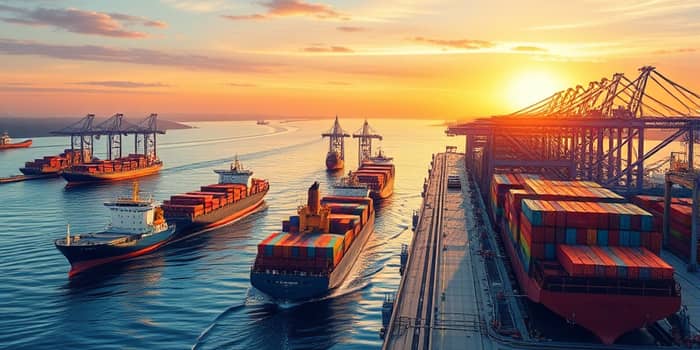
The global shipping industry has entered a new phase of measured cost control and efficiency, as rates ease from the heights reached during the COVID-19 upheaval. While past months were defined by uncertainty, today’s market offers a chance for logistics professionals and businesses to adapt and thrive in a more predictable environment.
In this article, we explore the forces behind rate normalization, provide key data on evolving trends, and share practical strategies to maximize resilience and profitability as the sector moves forward.
The COVID-19 pandemic unleashed profound supply chain disruptions worldwide, as movement restrictions, workforce shortages, and port lockdowns brought shipping lanes to a near halt. In India, only about 15–20% of commercial trucks were operational during the strictest lockdowns, severely impacting inland transport.
Major ports imposed quarantine rules on vessels, creating unprecedented congestion on global trade lanes. At the same time, stockpiling by consumers drove demand for essential and discretionary goods to record highs, setting the stage for extreme rate volatility.
Supply constraints spurred carriers to postpone vessel retirements and place massive orders for new ships. This response amplified rate spikes as capacity lagged behind surging demand.
Between 2020 and 2022, container rates soared, in some cases exceeding three to four times pre-pandemic levels. Contributing factors included:
Carriers, bolstered by profits, delayed downsizing the older fleet and invested in newbuilds, particularly container and car carriers. This response was a double-edged sword: it provided immediate relief to capacity shortages but sowed the seeds for future oversupply.
As the pandemic’s initial shocks recede, the outlook for the global container market has shifted from “deteriorating” to “stable,” especially in tanker and dry bulk segments. Key indicators include:
With dockside congestion easing and freight rates gradually softening, businesses can plan with greater certainty and optimize cost structures.
Understanding the numbers behind stabilization is critical for strategic decision making. The following table highlights recent figures and projections:
These metrics underpin a market that, while more predictable, demands careful capacity planning to avoid margin erosion through oversupply.
Several key forces are shaping this new equilibrium:
Trade policies and emerging manufacturing hubs in Southeast Asia also play a role, as companies diversify routes and adopt “just-in-case” inventory strategies to bolster resilience.
As rates normalize, logistics professionals and shippers can take proactive steps to safeguard margins and capitalize on new efficiencies:
These actions will help companies maintain agility in a market where even minor rate shifts can impact profitability.
Industry analysts from Drewry and Fitch Ratings agree that while the immediate future points toward normalization, lingering risks remain. Port labor disputes, new geopolitical flashpoints, or abrupt policy changes could introduce fresh volatility.
However, the broader trend of strategic diversification and digital transformation is positioning the industry for a more resilient era. Companies that embed flexibility into their supply chain design will be best equipped to navigate periodic disruptions and capitalize on stable or even declining freight costs.
Shipping rates have come off the pandemic high and settled into a more sustainable rhythm. This transitional period offers a unique opportunity for businesses to recalibrate operations, adopt best practices, and build long term resilience.
By understanding the data, monitoring emerging risks, and deploying strategic levers—such as digital tools, diversified partnerships, and sustainability programs—logistics leaders can turn stability into a competitive advantage.
References













